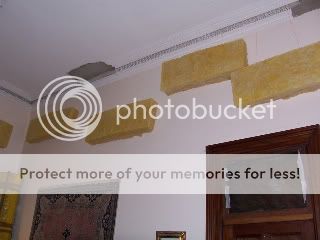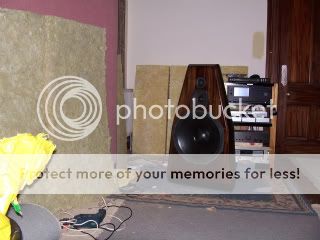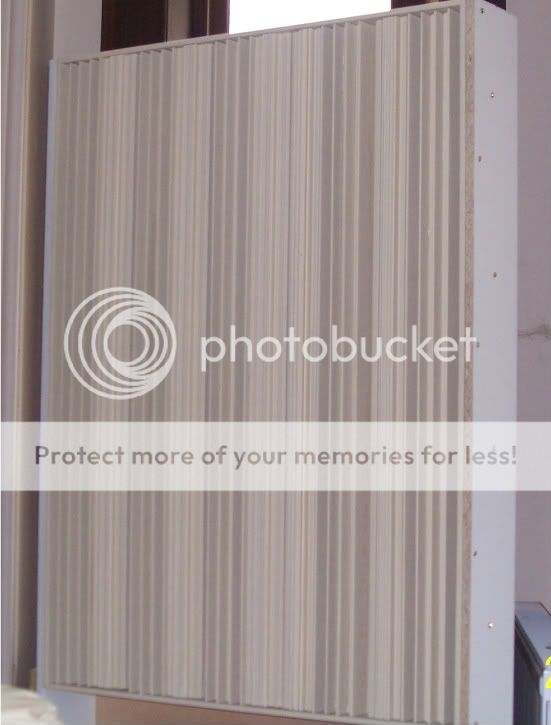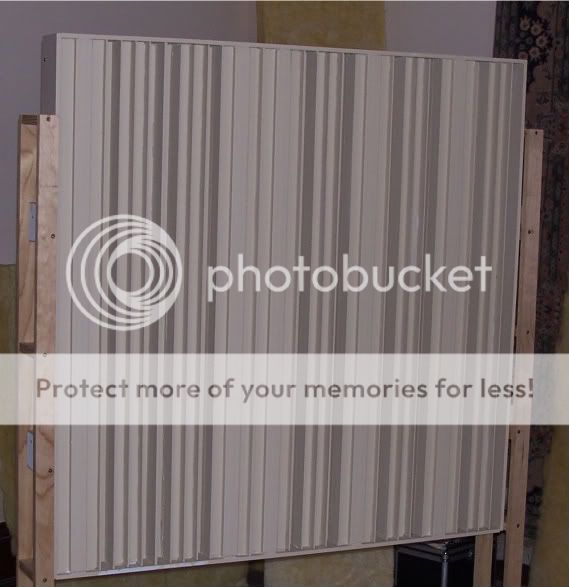If you can find manufacturers quoting specific impedance of there phonos you are doing much better than me 😀
These are considered to be good for Spidf. But yeah generally I think you are right about spidf and the connectors.
http://www.bluejeanscable.com/pages/technicaldocs/canarercap.pdf
Important question....
Where can I get that speaker stand? 😀
I have a set of stands like that. They ring like hell. I'm in the process of loading them up with SR500.
dave
I thought this was a cable thread?
the title is 'calbes make a difference, any thoughts?; (or somesuch.) Going from that I think it is totally fine to put the effects (or otherwise) of cables into context.
Dan recently restated MY essential point on the matter, why worry about tenth order effects (cables) when almost 99.99% of audiophiles do not get the first order effects correct.
That of course, comes from the build up over the subject from the audio industry. There may be one article about room treatment for every thousand cable reviews (all proclaiming these vast differences just as out friend from NZ has just done).
AND, as should be obvious from a lot of posts in this thread, for whatever reason most audiophiles have an aversion for science (at least science in audio?) and elevate the personal relevation to a primary position. (Don't have too much of a problem with that, as long as steps have been taken to make sure the personal experience of the sound is that of the sound only)
That it has turned a little towards room treatment is fantastic! If the cables guys think cables make a big and worthwhile difference, they are in for a wonderful shock if they ever do some room treatment!
I must say that I cannot fully agree with the thoughts about absorption etc currently being stated (unless I totally misunderstand it). It is a bit hard to make 'global' statements as if they apply to every room.
What I mean is that I got outstanding and astounding results from 'random' absorption placed around my room, including first reflection points. A stunning transformation.
BUT then again, my room is large and very solid indeed, highly reflective and hard walls, rang like a bell. It's not a gym of course, but get the idea of the long ring you hear in a gym and you'll get the picture.
So in my case, the slap echo was killing things. And like all things, it's not until you hear it gone that you realise what it had been doing all that time.
Just for larfs I'll give a picture. I just got bored one sun afternoon and started hanging temporary batts on the wall with string (simply as an experiment to see) and just kept going


As you can see (because it was just an experiment) no effort was made for looks or final appearance.
That was a year ago, the results have been sooooo good I have left them there haha.
I am kinda (but not completely) surprised that no one has mentioned one of the best ways to deal with nasty reflections: diffusion. (Or has there been some new acoustics Ive missed?)
here is a shot of one of my diffusors I built, this one was (again an experiment) quite a complex one, a prime five diffusor built within a prime seven, five repeat.

That one is behind the LP, this one is behind (and between) the speakers themselves. Nothing fancy, just a prime seven five repeat (therefore applying the barker code as did the one above)

Dunno if you guys have seen this yet, but here is a link to the best diffusor calculator on the planet, with very comprehensive info about them It not only calculates 1Dqrds (like mine above) but also 2Dqrds.
QRDude: Quadratic Residue Diffuser calculator
It's great to see the important things in audio coming up!
Difusers can be very effecitve, I use one on my ceiling and one wall is irregular masonry, so this is a difuser as well. Difusers don't need to be QRD, there are lots of ways to do this. All-in-all, both absorption and difusion is a good idea, but in different places. Absorption back from the speaker plane and difusion forward of it.
Absorption back from the speaker plane and difusion forward of it.
Whats the logic behind that setup? To avoid first reflections from the front wall?
While this is correct let's not take things too far. It all depends on the data rate, or the frequency of the sample rate. RCA cables, if they are not totally junk, are just fine for 44.1 kHz data, and if you use RCA video cables (like I used to) then there is simply no problem. They can't do higher data rates than that, agreed. As long as the data is received by the DAC in halfway decent condition, it is going to get decoded and clocked out without a problem. Your thinking that you can hear problems is not likely unless your cable was so bad that it was simply not allowing the data to get to the DAC.
If you are talking about DAC's with ASRC's on the input I might agree with you (never tried) but otherwise I've found very noticable differences between cables sold as digital cables. Not a fan of SPDIF anyway.
That it has turned a little towards room treatment is fantastic! If the cables guys think cables make a big and worthwhile difference, they are in for a wonderful shock if they ever do some room treatment!
Geez Terry, I guess our "cables guys" are so stupid we've never heard of good speakers or room treatment.
Once you are happy with your system and room treatment, you may just find that cables do make a difference. 😉
Difusers can be very effecitve, I use one on my ceiling and one wall is irregular masonry, so this is a difuser as well. Difusers don't need to be QRD, there are lots of ways to do this. All-in-all, both absorption and difusion is a good idea, but in different places. Absorption back from the speaker plane and difusion forward of it.
I don't think diffusion work very well in acoustically small rooms.
For lower frequencies a diffuser needs to be really big. So we end up with a device that works a as diffuser for higher frequencies but as a plain reflecting surface for lower frequencies.
At the same time people are sitting very near the device which can lead to single strong reflections from the diffusor. In that case the diffuser creates reflections early in time that would not be there without the device.
Best, Markus
I was messing around programing my own reverb the other day thinking about this stuff.
There might be something really weird going on in a lot of studios if you think about the playback room and the way reverbs get mixed in a recording. It's kind of obvious I just never thought about it this way. Basically on the recordings the low end reflections will either be filtered out or suppressed in volume. But in the average playback room the opposite is true - there can be an abundance of room treatment which only suppresses the high end reflections/reverb.
So using a typical studio recording played back in a typical studio I think the high end reverb will come from the recording but the low end reflections will be absent and not able to mask the low end reflections in the playback room. So you get this quasi crossed over set of reflections - highs from the recording and lows from the room.
There might be something really weird going on in a lot of studios if you think about the playback room and the way reverbs get mixed in a recording. It's kind of obvious I just never thought about it this way. Basically on the recordings the low end reflections will either be filtered out or suppressed in volume. But in the average playback room the opposite is true - there can be an abundance of room treatment which only suppresses the high end reflections/reverb.
So using a typical studio recording played back in a typical studio I think the high end reverb will come from the recording but the low end reflections will be absent and not able to mask the low end reflections in the playback room. So you get this quasi crossed over set of reflections - highs from the recording and lows from the room.
I never thought of it that way, makes sense, especially if the mix-guy isn't having that in mind at the time [ie didn't read, absorb, and evaluate applicability to the current studio-room surfaces as described in the above post] and luck would have it that conditions created [and recorded] the LP room effect.
Basically on the recordings the low end reflections will either be filtered out or suppressed in volume.
Why would that be true for lower frequencies only? Close-miking significantly increases the direct/reflecting ratio for all frequencies.
Last edited:
Filtering. It's engineers and mixers going for a picture that is more perfect than reality. Generally if you generate reverbs or capture them and then mix them so you can actually hear the reverbs, those low end modes really build up and make a boomy picture. It's probably a side effect of mixers wanting to hear the high end reverbs and have those obviously audible. When you do that with an unfiltered verb the boom will need to be suppressed.
Still don't understand what the point is you're trying to make. Stereo does not even try to capture the physical properties of a sound field. The "original" that stereo as a technique is capable of creating, is the sound field heard through loudspeakers. That's what most audiophiles don't understand when they think of speakers as a replacement for real instruments.
A lot of professional control room designers go to great lengths to reduce unwanted low frequency energy by absorption.
A lot of professional control room designers go to great lengths to reduce unwanted low frequency energy by absorption.
Nah, I could prove in some objective tangible ways that 2 channel stereo has a lot of spacial mis localizations and just blatant artifacts. It doesn't have to be this way just because we are only using 2 discrete channels. And in fact most stereo systems can push imaging on there own much further than is typically utilized in most recordings.
My point is that if you are Low Passing the reflections in a room you are probably going to end up hi passing the reflections on the recording too much when mixing. Push pull circle of confusion stuff. Just trying to give some insight on how to get out of the circle is all.
My point is that if you are Low Passing the reflections in a room you are probably going to end up hi passing the reflections on the recording too much when mixing. Push pull circle of confusion stuff. Just trying to give some insight on how to get out of the circle is all.
That's pretty simple: standardization.
Yeah, but who's standard? I think it should be mine of course (haven't explained it fully), Linkwitz thinks it should be his, Geddes thinks it should be his etc...
If you are thinking 2 channel stereo should be the standard as "the closest approach to the original sound" I think I can prove you wrong easily with a playback shoot out. You play a song back in standard stereo and I will play the same song decoded to surround. And we can see which one localizes the space more accurately.
Of course you are most likely going to regard my efforts as a distortion. But you must understand that most humans when encountering a shift from less accurate to more accurate think it's a distortion at first (in a relative sense it is).
Yeah, but who's standard?
That's the real problem.
If you are thinking 2 channel stereo should be the standard as "the closest approach to the original sound"
Did anybody say so? No. But I think two channel sound reproduction will be with us for a very long time. Standardization would only help to bring it to its full potential.
Of course you are most likely going to regard my efforts as a distortion.
If we only would know what your efforts are...
Eh business stuff is slowing me down. If I was younger and dumber I probably would have just given my programs and ideas away by now. But I am taking my time you know making sure I am not missing something.
I hope that day will come soon because it makes no sense constantly talking about something without knowing what that something is.
Really? You couldn't derive my point from what I was saying about experimenter's bias? All I was saying is that everyone thinks they are right but none of them actually come together in agreement over the specifics.
It's obvious why they don't agree. There's not enough scientific data that would allow for the type of claims Toole, Linkwitz, Geddes, Moulton, etc make. They mix scientific facts with their own subjective opinions. It's simple as that. You won't change the world by making different claims solely based on your own subjective opinions. That's just what every other audiophool does.
- Status
- Not open for further replies.
- Home
- Design & Build
- Parts
- I don't believe cables make a difference, any input?